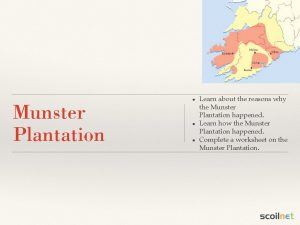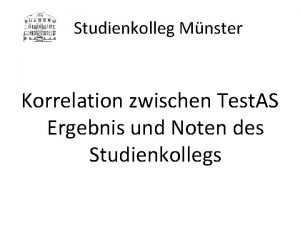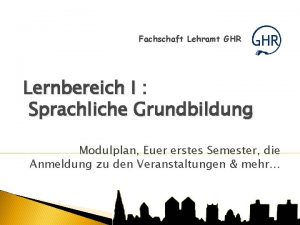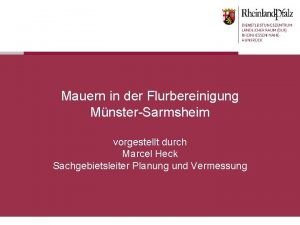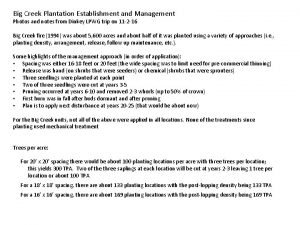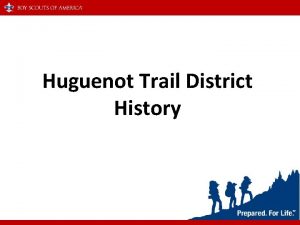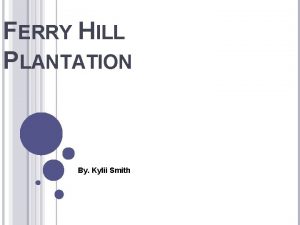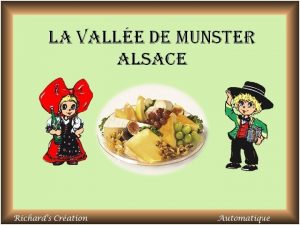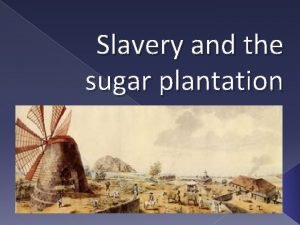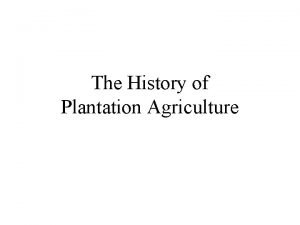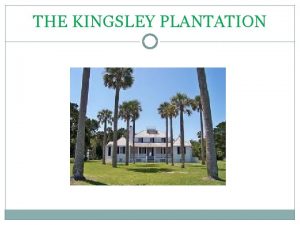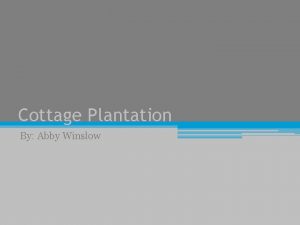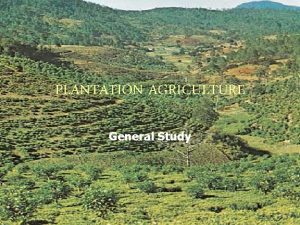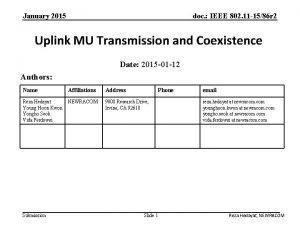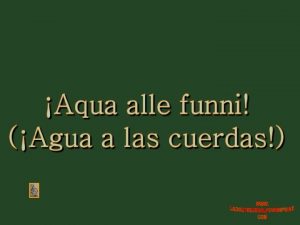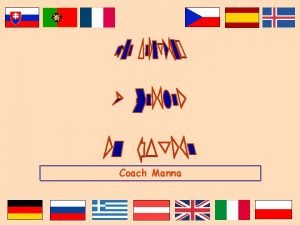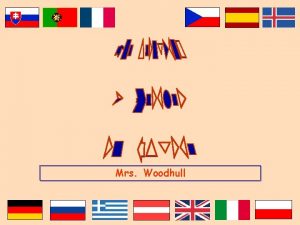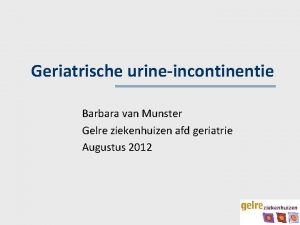The Plantation of Munster 1586 Lesson Intentions Today


























- Slides: 26

The Plantation of Munster (1586)

Lesson Intentions: • Today, we will learn about… Ø How did the Munster plantation work? Ø What were the results of the Munster plantation?

Ireland 1450:

Area to be planted:

Area to be planted:

Important sites:

The Plan of the Plantation: • The confiscated land was surveyed and mapped. • Half a million acres was available for planting. • The English government then decided on a scheme of Plantation. (3 main reasons) 1. The government wanted to encourage the younger sons of the nobility (landed gentry) in Southern England to settle in Ireland. 2. It wanted the plantation to become a centre of English civilisation. (‘civilise Ireland’) (customs / law) 3. The planters would also have to be ready to resist a Spanish invasion. (Anglo-Spanish War 1585 -1604)

Questions: Ø What did the English do to the confiscated lands? Ø How many acres of land was available for planting? Ø What scheme did the English decide upon? Ø What were three main reason for this?

English map of Kerry and Desmond:

The Plantation in Action: • The land was divided into estates of 4, 000, 6, 000, 8, 000 and 12, 000 acres. • Those who got estates were called undertakers because they undertook (agreed) to fulfil certain conditions: 1. They would settle only English farmers, labourers and craftsmen on their estates. 2. They would pay rent to the Crown. 3. They would be ready to defend themselves after seven years. Ø ‘undertaker’ = a man who received an estate in a plantation and undertook (agreed) to follow the rules of the plantation.

Famous Undertakers: • Some undertakers got very large grants of land. • One of these was Sir Walter Raleigh (An English explorer), who was given 42, 000 acres around Youghal, Co. Cork. • He is responsible for introducing the potato to Ireland, it came from South America. • Another one was Edmund Spenser. (An English Poet)

Sir Walter Raleigh:

Edmund Spenser:

Questions: Ø How were the estates divided? (acres) Ø What was an undertaker? Ø What three main rules did they have to follow? Ø Can you name two famous undertakers?

Video / Task: • https: //www. youtube. com/watch? v=WLwjmr oh. Dh. I&list=PLWYRz. BXFZzyw. L 868 d 5 i 1 Qdabz. W 8 Tjp 45 D&index=1 Ø Complete questions 1 to 4 while you watch the video. Ø Then, we will go through the answers.

How successful was the Plantation? Problems: • The English government hoped this plantation would be more successful than the one in Laois-Offaly. • But problems soon arose: 1. The government hoped that 20, 000 English people would settle in Munster. But by the mid 1590 s only around 4, 000 settlers had arrived. 2. The undertakers could not attract enough English tenants, so they had to rent to the Gaelic Irish and the Anglo-Irish. (Old English) 3. The old owners attacked the new settlers and hunted some of them away. Eventually in the Nine Years War (1594 -1603), the planters were driven from their estates into towns or back to England.

Questions: • What had the English hoped for this Plantation? • What were three main problems for this plantation?

Nine Years War 1594 -1603:

How successful was the Plantation? Long-term changes: 1. When the Nine Years War ended, some of the settlers returned. But others sold off their estates to new planters such as Richard Boyle, Earl of Cork. These new planters stayed on to become a wealthy Protestant minority. 2. New plantation towns were built. Towns such as Bandon and Mallow, Co. Cork, Tallow and Lismore, Co. Waterford and Killarney, Co. Kerry. These became centres of English law and influence. They were also important market towns. 3. The planters introduced new breeds of cattle and sheep and new farming methods. 4. They also developed industries such as timber, mining and fishing. 5. The plantation was restarted in the 1600 s. By 1641, 22, 000 Protestant s had settled in Munster.

Richard Boyle, 1 st Earl of Cork:

Plantation towns:

Questions: Ø Why did ‘new planters’ arrive? Ø What type of towns were built? Ø How was farming effected? Ø What type of industries were developed? Ø By 1641, how many Protestants had settled in planted areas in Munster?

New plantation around Cahir Castle, Co. Tipperary in 1599

Cahir Castle, Co. Tipperary

Final thought: • While the Munster Plantation was not a success in the long term, the English government again learned lessons that would be applied in later plantations.

Homework: • Questions 1 to 9 on page 198 of textbook have to be completed by Thursday’s class.
 Munster plantation
Munster plantation Today lesson or today's lesson
Today lesson or today's lesson Today's lesson or today lesson
Today's lesson or today lesson Today's lesson or today lesson
Today's lesson or today lesson Cronologia de la vida de galileo galilei 1586
Cronologia de la vida de galileo galilei 1586 Today meeting or today's meeting
Today meeting or today's meeting Today's class was amazing
Today's class was amazing Proposal kickoff meeting agenda
Proposal kickoff meeting agenda Studienkolleg münster
Studienkolleg münster Chanson albert de munster paroles
Chanson albert de munster paroles Sesam wwu
Sesam wwu Franziskus spital augenabteilung
Franziskus spital augenabteilung Mountain range formed by folding outside ireland
Mountain range formed by folding outside ireland Bscw münster
Bscw münster Geldverkehrsrechnung muster excel
Geldverkehrsrechnung muster excel Waltering fh münster
Waltering fh münster üst ekstremite amputasyon seviyeleri
üst ekstremite amputasyon seviyeleri Münster soket
Münster soket Terrassenbau münster
Terrassenbau münster Deutschlandstipendium fh münster
Deutschlandstipendium fh münster Plymouth plantation summary
Plymouth plantation summary Fox creek plantation
Fox creek plantation Rosswood plantation
Rosswood plantation Plantation human development trust
Plantation human development trust Bellgrade plantation
Bellgrade plantation Pecan front gate
Pecan front gate Ferry hill plantation
Ferry hill plantation
